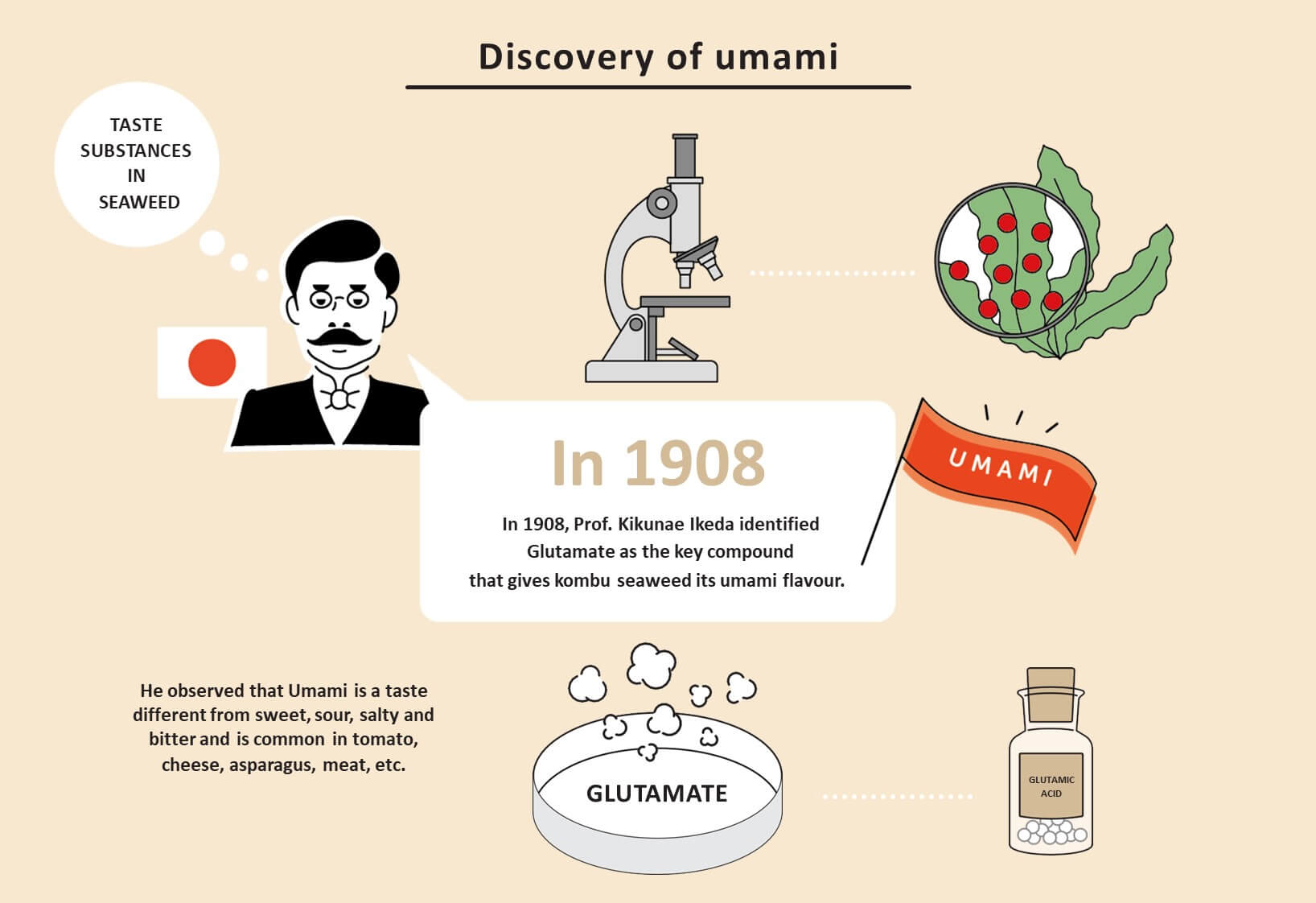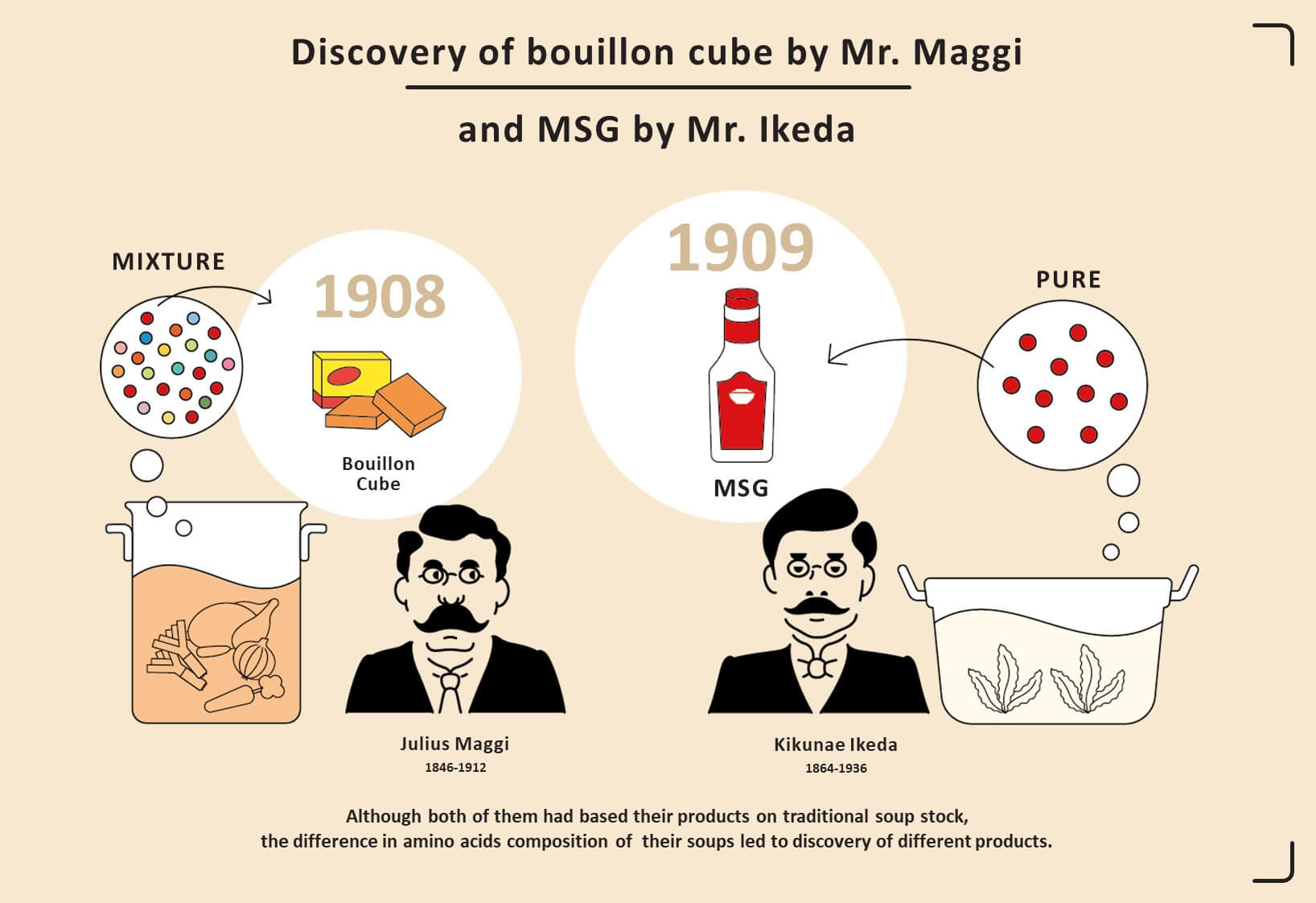Who Identified Umami and When?
Umami was first identified by Japanese scientist Dr. Kikunae Ikeda in 1908. Dr. Kikunae found umami was made of glutamate, an amino acid that was one of the building blocks of protein.
When and how umami was discovered
In 1907, Professor Kikunae Ikeda while savoring a bowl of boiled tofu in kombu dashi (a broth made from a kind of kelp.), he became convinced that there was another basic taste altogether different from sweet, salty, sour, and bitter. Intrigued by this thought, he began analyzing the composition of kombu dashi and by 1908 he isolated crystals that conveyed the taste he had detected. These crystals were made of glutamate—one of the most common amino acids in foods, and in the human body.
Watch this video of umami discovery story
AMBITION - Umami discovery history

By 1909,Ikeda and his partner Saburosuke Suzuki Senior had figured out the means of mass production of this substance, in part by learning how to combine the glutamate with sodium, which is tasty, easy to use as a seasoning, and easy to digest. He had invented monosodium glutamate, MSG. He gave the taste of MSG a temporary name until he thought of a better one. He called the taste “umami.”

The difference between Japanese and European soup stock
Dr. Ikeda may have been first to identify umami, but he wasn’t the only person in the world who was trying to decipher the mysteries of soup stock. Around the same time, but half a world away, a pioneer in the food industry named Julius Maggi was hard at work developing rapid-cooking dehydrated soups. Maggi’s work eventually resulted in the creation of bouillon cubes made from hydrolyzed vegetable proteins—it was the hydrolysates that produced the bouillon’s meaty flavor. Both Ikeda and Maggi were working with soup stock to determine its component parts. But there was one crucial difference. Japanese soup stock was based on kombu, and European soup stock was based on vegetables. Although both men had developed products based on soup stock, the component amino acids of their soups were different.
Ikeda wanted his identification of umami to lead to the development of something useful for people’s lives. He isolated glutamate from an amino acids mixture based on wheat protein hydrolysate, and went on to create a business to bring its umami taste to Japan, and then to the world. Maggi developed a bouillon cube using a protein hydrolysate that was a mixture of amino acids. The difference between the two inventions, based on a single amino acid or amino acid mixture, reflects differences in food culture between Japan and Europe.

Content you may like

What is Umami?
Umami, which is also known as monosodium glutamate is one of the basic five tastes including sweet, sour, salty, and bitter. Umami means “delicious savory ...

Umami is Found in Every World Cuisine
Umami (“essence of deliciousness”) may be a Japanese word, but the taste is not limited to Japanese cuisine. You can find umami in foods prepared ...

What are the Five Basic Tastes?
The five basic tastes—sweet, sour, salty, bitter, and umami—are messages that tell us something about what we put into our mouth, so we can decide ...
